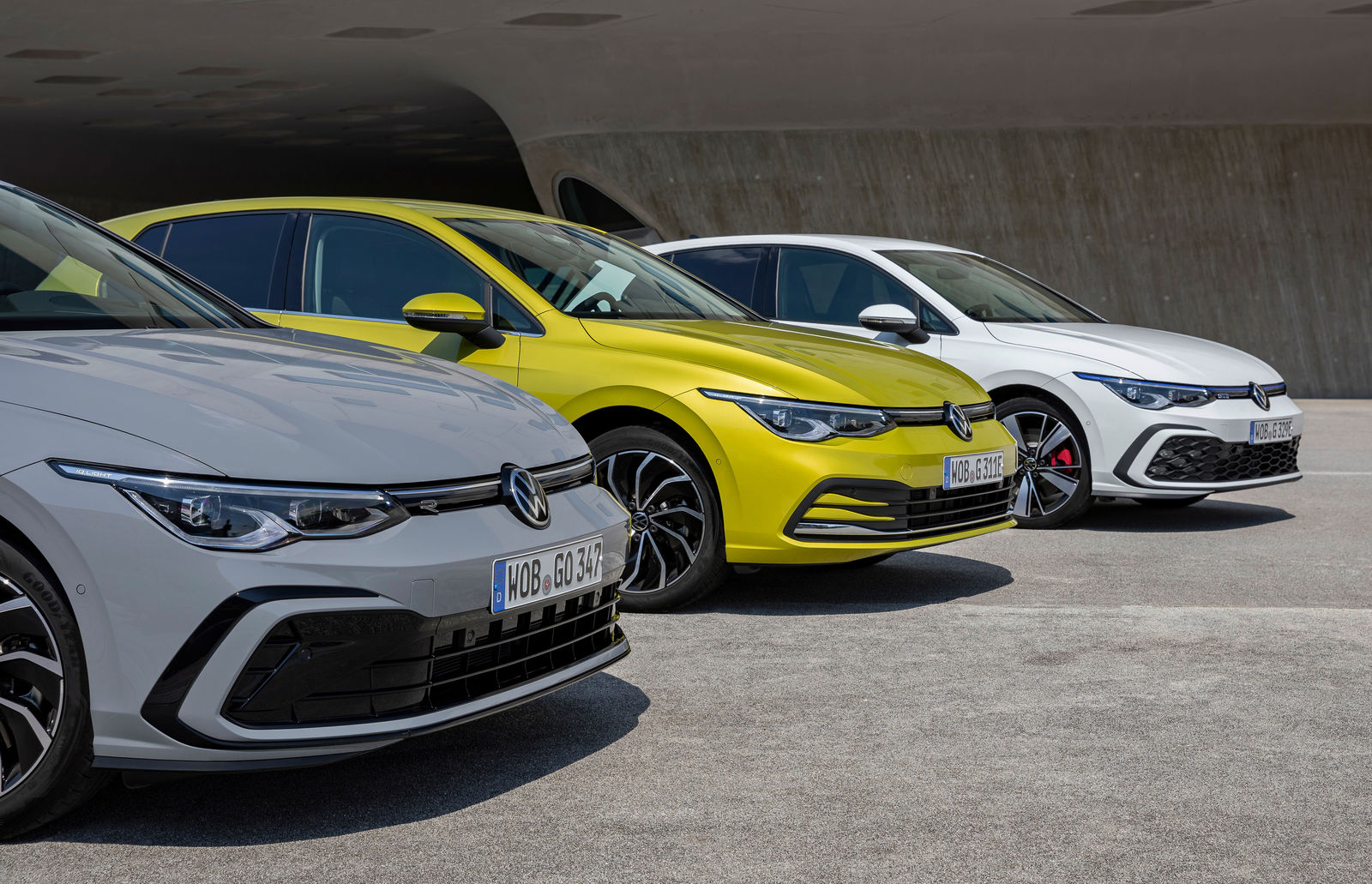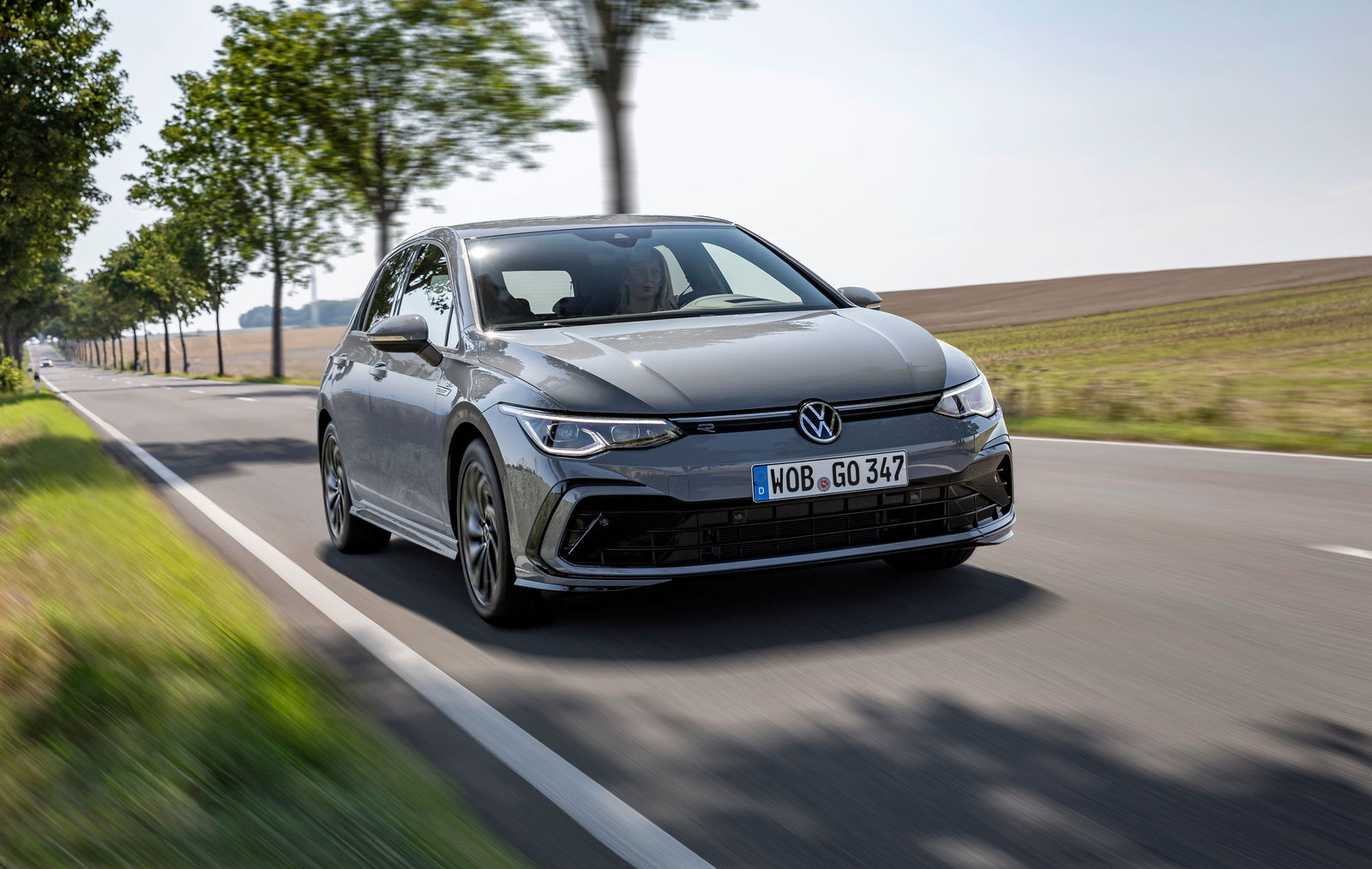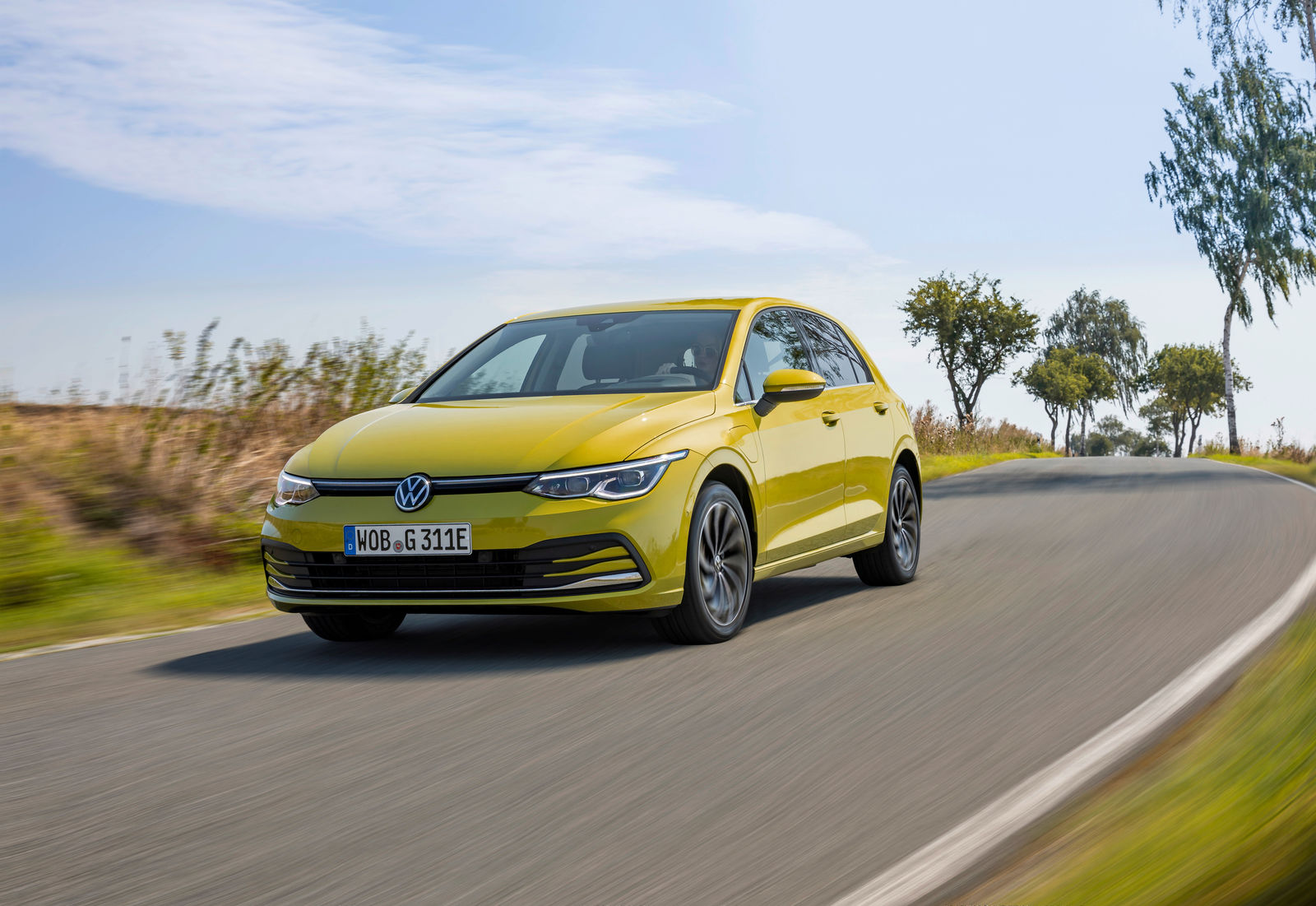Long ranges – in both electric and hybrid modes. The new plug-in hybrid drives temporarily turn the Golf into a zero emission vehicle. Comprising a 1.4-litre TSI engine, an electric drive motor and a lithium-ion battery under the rear bench seat, the drive system provides a fascinating combination of minimum consumption and very impressive power development. The Golf eHybrid develops a system torque of 350 Nm practically from a standing start, while the Golf GTE produces 400 Nm.
Zero emissions in everyday driving. The long electric ranges move the application spectrum of the two new Golf plug-in models in the direction of a fully-fledged zero emission vehicle. That is because the Golf eHybrid and Golf GTE are able to cover the daily driving distances of most commuters with their range of up to 80 electric kilometres. It can generally be said that practically all short-distance trips are possible with zero local emissions with these Volkswagen models. This also takes place automatically, because both the Golf eHybrid and the Golf GTE always start journeys in the all-electric E-MODE if the battery is sufficiently charged (except at battery temperatures of below -10°C). For this reason, customers who buy these models also benefit from government grants in many countries. Incidentally, the claim that plug-in hybrid cars are charged less frequently than electric vehicles is a prejudice that was already shown to be incorrect in a large-scale study carried out in the US and Germany by the renowned Frauenhofer Institute for Systems and Innovation Research (ISI) together with the Karlsruhe Institute of Technology (KIT) at the end of 2017. Since both models can also be driven in all-electric mode at speeds up to 130 km/h, they also allow longer distances to be covered on motorways under purely electric power. In addition, it is also possible to reserve electric energy during longer journeys in order to guarantee that it is possible to drive in E-MODE with zero local emissions in the built-up area at the destination, for example. At the start of the journey, the driver simply enters the percentage of the battery capacity that must be reserved in the infotainment system. The battery also does not have to be fully charged at the start of the journey for this, since it can also be charged during the trip by the TSI engine and brake energy recuperation.
Predictive hybrid strategy. The intelligent software and hardware of the Golf contributes to increasing the electric range and reducing consumption. An example: both plug-in hybrid models are equipped as standard with the Discover Media navigation system. The navigation systems include the topography in the route calculation using map data and GPS in order to offer the route that can be driven most efficiently – with only few uphill gradients, for example. In addition, the navigation system allows the Golf to provide the driver with predictive information about the route ahead. This allows deceleration in good time before a bend, for example, in order to obtain the optimum brake energy recuperation effect. When the also standard ACC – Adaptive Cruise Control – is active, the Golf models with plug-in hybrid drive even do this automatically. Irrespective of whether driving in manual mode or with active ACC, the predictive hybrid strategy means that plug-in hybrid models can recognise town boundaries and therefore automatically adapt operation of the electric drive motor in advance in Hybrid mode.
Plug-in charging. Full charging of the battery in the Golf eHybrid and Golf GTE is normally performed externally. A charge port is provided in the front wing on the driver side for this purpose. The charging cable is plugged in here. This “plug-in” connection also explains the designation of the hybrid drive. Depending on the power source, charging takes place with 2.3 or 3.6 kW alternating current (AC). When supplied with 230 volts at 2.3 kW via the normal domestic grid, the battery is fully charged again in five hours if it had previously been completely empty. If the power source is a Volkswagen wall box or a charging station with 360 volts and a charging cable designed for 3.6 kW, the charging time is reduced to three hours and 40 minutes. The battery charger integrated in the car manages charging fully automatically; all the driver has to do is to connect the plugs. The driver can also control the time at which charging takes place via the infotainment system or using the We Connect app on a smartphone in order to benefit from cheaper off-peak electricity, for example. Convenient: the vehicle interior can be cooled or heated before the start of a journey both during charging with a connected charging cable or whenever the vehicle is parked.
Expansion of the charging infrastructure. In general, it can be said that electric charging when on the move is also becoming increasingly easier and routine, since Volkswagen Group is continuously expanding its charging infrastructure: by 2025, the company will have installed around 35,000 charging points in Europe itself together with its commercial partners, and many of these will be publicly accessible. These will be complemented by the flexible, fast charging stations from Volkswagen Group Components, which can be set up wherever there is a short-term need, such as at major events. These become fixed charging points through connection to the low-voltage network and can charge two electric cars or plug-in hybrid vehicles simultaneously thanks to their fast charging technology (charging power up to 150 kW).
Efficiency that is fun. The Golf eHybrid and Golf GTE are not just efficient Volkswagen cars that offer temporary zero local emission driving, but are also very dynamic models. Both Golf versions have a 1.4-litre TSI engine and a HEM80evo type electric drive motor on board; the electric drive motor forms a compact unit together with the 6-speed DSG dual clutch gearbox (DQ400e) designed for this application. When the full system power of 150 kW is used, the Golf eHybrid accelerates to 100 km/h in 7.4 seconds; the comfortable Golf reaches its top speed at 220 km/h. The Golf GTE has a top speed of 225 km/h and covers the classic sprint in 6.7 seconds with its 180 kW. This means that it also impresses as a sports car among the compact hybrid models. However, in both cases it is not the top speed or the sprint that is most important, but rather the power development, which is both incisive and fascinating: the electric drive motor acts like an additional booster, supporting the turbocharged engine and ensuring that powerful torque is continuously available.
Exclusive as standard. Volkswagen offers the Golf eHybrid in the upscale Style trim level. Like its predecessor, the Golf GTE will once again be launched as an independent model with customised GTE equipment. Always standard equipment: features such as the new Digital Cockpit Pro (digital instruments with hybrid displays) and the Discover Media navigation system including streaming, Internet and DAB+, mobile phone interface with inductive charging function and voice control. Also on board these hybrid models as standard: Dynamic Road Sign Display, a multifunction leather steering wheel, Autonomous Emergency Braking Front Assist, the Air Care Climatronic automatic air conditioner, a brake energy recuperation function, the local Car2X warning system, the new keyless comfort start function Keyless Start, LED Plus headlights and LED tail light clusters as well as 17-inch alloy wheels. The driver and front passenger sit on sports comfort seats in the Golf eHybrid, while customised premium sport seats with integrated head restraints in GTI style are used in the Golf GTE. The Golf eHybrid is standard-equipped with Travel Assist for assisted driving up to 210 km/h (including Adaptive Cruise Control ACC and lane keeping system Lane Assist). The Golf GTE is also equipped with details such as sporty bumpers and side sills, an LED light strip in the radiator grille as well as other customised GTE-specific exterior and interior equipment.


